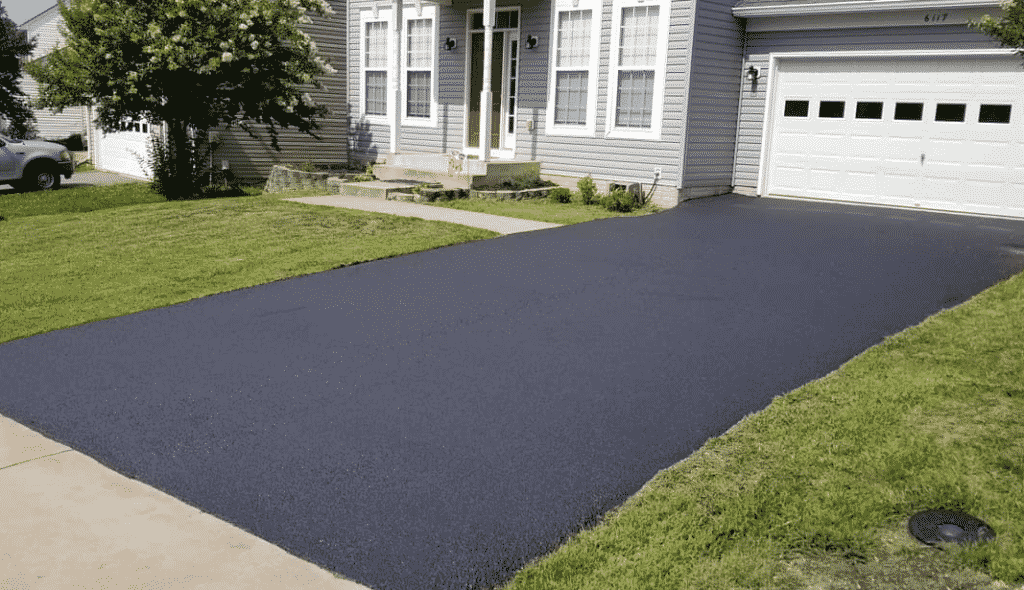Raise Sidewalk Efficiency: Cold Mix Asphalt Sealing Techniques
Raise Sidewalk Efficiency: Cold Mix Asphalt Sealing Techniques
Blog Article
Cold Mix Asphalt Vs. Hot Mix Asphalt: Which Is Right for You?

Make-up Differences
Cold mix asphalt is produced by emulsifying the asphalt binder with water and an emulsifying agent before blending it with accumulation. The hot mix asphalt manufacturing procedure involves heating up the aggregate and asphalt binder separately before integrating them at the asphalt plant.
In addition, cold mix asphalt has a tendency to be less thick and extra adaptable than hot mix asphalt. This flexibility makes it better fit for locations with greater levels of activity, such as driveways or roads with hefty web traffic. On the other hand, warm mix asphalt is understood for its high longevity and resistance to rutting and breaking, making it a preferred choice for highways and high-traffic roadways where longevity is critical.
Installment Refine Differences
The process of setting up cold mix and warm mix asphalt shows noteworthy variations in their demands and procedures. In contrast, warm mix asphalt necessitates an extra elaborate installation procedure. Due to the heating demands, hot mix asphalt setups are generally carried out by professionals with specific equipment, ensuring an extra long-term and structurally audio result.
Longevity and Long Life Aspects
When taking into consideration asphalt options, resilience and long life are vital variables to review for enduring pavement performance. Warm mix asphalt (HMA) is understood for its exceptional sturdiness and long life.
In regards to long life, HMA usually outshines CMA as a result of its premium toughness and resistance properties. HMA sidewalks have a longer life span, calling for less regular fixings and upkeep, which can equate to cost financial savings in the long run. In addition, HMA pavements are extra quickly customizable to fulfill particular task needs, better improving their durability.
Expense Factors To Consider
Thinking about the financial ramifications is a vital aspect when examining the selection between warm mix asphalt (HMA) and cold mix asphalt (CMA) for sidewalk tasks. While the preliminary expense of hot mix asphalt is normally greater than that of cold mix asphalt, HMA usually offers a more cost-effective remedy in the lengthy run as a result of its exceptional longevity and durability. HMA is understood for its capacity to hold up against rush hour loads and severe weather condition problems, minimizing the demand for constant repairs and maintenance. On the various other hand, cold mix asphalt is more economical upfront but may require even more constant patching and resurfacing, bring about greater maintenance expenses gradually.
In enhancement to material expenses, it's essential to consider the expenditures associated with installment and maintenance when contrasting HMA and CMA. Inevitably, the decision between HMA and CMA must take into account not just the preliminary cost yet additionally the lasting economic effects to figure out the most cost-efficient choice for the details sidewalk task.
Environmental Effect Comparison
Comparison of the environmental impacts between hot mix asphalt (HMA) and cold mix asphalt (CMA) exposes unique differences in sustainability techniques. HMA manufacturing calls for high temperature levels, resulting in raised power usage and greenhouse gas emissions. see this page The procedure likewise launches volatile organic substances (VOCs) and hazardous air contaminants (HAPs) right into the atmosphere. In contrast, CMA is produced and used at reduced temperature levels, reducing power usage and emissions considerably. The lower manufacturing visit this website temperature levels of CMA lead to reduced fuel consumption and lower degrees of carbon dioxide discharges, making it an extra environmentally pleasant alternative.
Additionally, the usage of CMA often includes recycling existing asphalt sidewalk, advertising source conservation and lowering the amount of waste sent to landfills. This recycling aspect additionally boosts the sustainability of CMA contrasted to HMA. Overall, when considering the ecological impact, CMA becomes a much more environmentally lasting option because of its reduced power demands, reduced emissions, and the possibility for reusing existing products. By opting for CMA over HMA, road construction jobs can contribute positively to ecological preservation initiatives.
Conclusion
Finally, the choice between cool mix asphalt (CMA) and warm mix asphalt (HMA) depends on various variables such as make-up, installation process, resilience, long life, cost, and environmental influence. asphalt repair. While CMA offers a cost-efficient and quick service for small fixings, HMA makes sure premium toughness and long life for heavy website traffic areas. Consider these factors thoroughly to identify which kind of asphalt is the best option for your paving requires

Considering the economic effects is a vital facet when assessing the selection between warm mix asphalt (HMA) and chilly mix asphalt (CMA) for sidewalk tasks. While the preliminary cost of warm mix asphalt is generally higher than that of cold mix asphalt, HMA typically supplies a more affordable solution in the long run due to its remarkable sturdiness and durability. cold mix asphalt.Comparison of the ecological influences between warm mix asphalt (HMA) and chilly mix asphalt (CMA) exposes distinctive distinctions in sustainability practices.In final thought, the choice in between cool mix asphalt (CMA) and hot mix asphalt (HMA) depends on different factors such as composition, setup process, longevity, longevity, cost, and environmental impact
Report this page